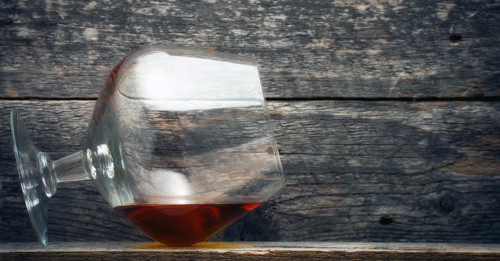Brandy Essential Info
- Color: Varies, light amber to rich ruby-brown
- Region: Armagnac and Cognac regions of France, but brandy can technically be made anywhere
- ABV: 40% ABV (for Cognac), higher for Armagnac
- Aged: Varies
- Made from: White wine grapes, Ugni Blanc (Cognac), Ugni Blanc, Colombard, Baco Blanc, and Folle Blanche (Armagnac)
- Commercial Examples: Courvoisier, Remy Martin, Hennessey, Brillet, Gilles Brisson, Clos Martin, Darroze, Sempe, Janneau, Larressingle
- Popular Cocktails: The Metropolitan, Sidecar, Vieux Carre, Brandy Crusta, Mint Julep (pre-Civil War-era Juleps were made with Cognac!), New York Sour
Ah, the stuff of snifters. The stuff diplomats (probably?) drink when discussing international trade agreements. The stuff with all the letters on the bottle: VS, VSOP, XO, ESP—OK, that last one’s wrong. But what the hell is brandy? And why should you suffer the intimidation (and price tag) of enjoying it?
Well, it’s good. And it’s not actually that complicated. Brandy is just distilled wine. Whereas Scotch comes from (malted) barley and vodka comes from pretty much anything, brandy can only be made by distilling wine—any fruit wine, actually: Calvados comes from apple wine and Schnaps—good Austrian Schnaps—are distilled from a variety of seasonal fruit wines. But major French brandies Cognac and Armagnac come from grapes and specific regions (the Armagnac and Cognac regions of France, logically). (Pisco is also a brandy, though both the grapes used and production process make it very different from the stuff we put into snifters.)
As for that snifter stuff, a few facts to get straight: its roots are actually Dutch, going back to the days of long sea voyages, where wine was distilled to last longer. And while Cognac seems quintessentially French, they don’t actually drink a ton of it—most of it’s exported to China, where it’s a major status symbol. Oh, and Armagnac might be lesser known, but it actually came first (around the 14th Century).
Okay, now that we’ve got that down, the taste (which is actually best enjoyed in a small, tulip-shaped glass, not that giant snifter). Just a few elements influence the final flavor profile of an Armagnac or Cognac, but the results can be drastically different. Armagnac is made with a blend of grapes—usually four—and column-distilled twice, resulting in a fruitier, huskier, more rustic spirit that can stand up to aging in tannic black oak from the Monlezun forests—and isn’t cut with water, so lands at a higher ABV. Cognac is (usually) made with just one grape, Ugni Blanc, and tends to have lighter fruit (think orange, apricot) with a more delicate profile and things like nuts, caramel, spice, and florals. As either brandy ages, they’ll take on more complexity (though new wood is used only briefly, to avoid dominating the flavor profile), and you’ll get progressions into flavors like prune, spice, tobacco, butterscotch, herbaceousness, mocha, etc. Again, Cognac will impart everything a bit more subtly, though both Armagnac and Cognac should have a nice, rich mouthfeel. Oh, and if you’re lucky enough to have some ultra-aged (think double digits) bottles on your hands, look out for hints of “rancio,” which yes sounds a bit like “rancid” because it describes the (tasty) results of oxidation—think funk, complexity, nuttiness, and even some mushroom.
Despite its apparent fanciness, Cognac (and even Armagnac) are great for cocktails. Just don’t buy a hundred-plus dollar bottle of vintage Armagnac and mix it. VS, or even better VSOP, are a good place to start for mixing.
